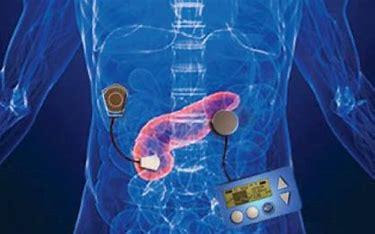
Source: U.S national institutes of health
In a trial primarily funded by the National Institute of Diabetes and Digestive and Kidney Diseases (NIDDK), part of the National Institutes of Health, researchers explore the benefits of ‘bionic pancreas’ in type 1 diabetic patients. This multicenter clinical trial has revealed that a device known as a bionic pancreas which uses next-generation technology to automatically deliver insulin was more effective at maintaining blood sugar levels within normal range than standard-of-care management among people with type 1 diabetes.
Artificial pancreas or closed-loop control systems are automated insulin delivery systems which track the users’ sugar levels in a continuous pattern and automatically deliver the insulin hormone when needed using an insulin pump. The bionic pancreas in comparison to other available artificial pancreas technologies, require less user input and provides more automation because it has algorithms which continuously adjust insulin doses automatically as per users’ needs. First time users of bionic pancreas initialize it by entering their body weight into the device’s dosing software where they do not have to count carbohydrates, nor initiate doses of insulin to correct for high blood sugar. Also the healthcare providers need not make periodic adjustments to the settings of the device, leading to a new level of ease to the day-to-day management of type 1 diabetes.
The trial was conducted across 16 clinical sites across the United States over a period of 13 weeks with 326 enrolled participants aged between 6 to 79 years who had type 1 diabetes and had been using insulin injections for at least one year. There was random assignment of participants to either the treatment group using the bionic pancreas or a standard-of-care control group using their personal pre-study insulin delivery method. The control group participants were provided with a continuous glucose monitor and almost one-third of them were using commercially available artificial pancreas technology during the study period.
Glycated hemoglobin improved from 7.9% to 7.3% in participants using bionic pancreas in comparison to the standard-of-care control group, where it remained unchanged. The bionic pancreas group participants spent 11% (nearly 2.5 hours per day) more time within the targeted blood sugar range compared to the control group. Improvements were most evident in participants who had higher blood sugar levels at the beginning of the study, these results were the same in youth and adult participants.
In the bionic pancreas group, the most frequently reported adverse event was high blood sugar (hyperglycemia) caused by problems with insulin pump equipment. The number of episodes of low blood sugar was low and was not different between the groups. This study was published in the New England Journal of Medicine.
Four companion papers were also published in Diabetes Technology and Therapeutics, two of which give more detailed results among the adult and youth participants. An extension study was also done, the results of which are published in a third paper in which the participants from the control group switched to using bionic pancreas for 13 weeks and experienced improvements in glucose control same as to the bionic pancreas group in the randomized trial. A fourth published paper showed that using the bionic pancreas with a faster acting insulin in 114 adult participants improved sugar control as effectively as using the device with standard insulin.
It is praiseworthy to have a device like bionic pancreas which can permit people to worry less about their blood sugar levels and focus on living their healthiest and fullest lives.

